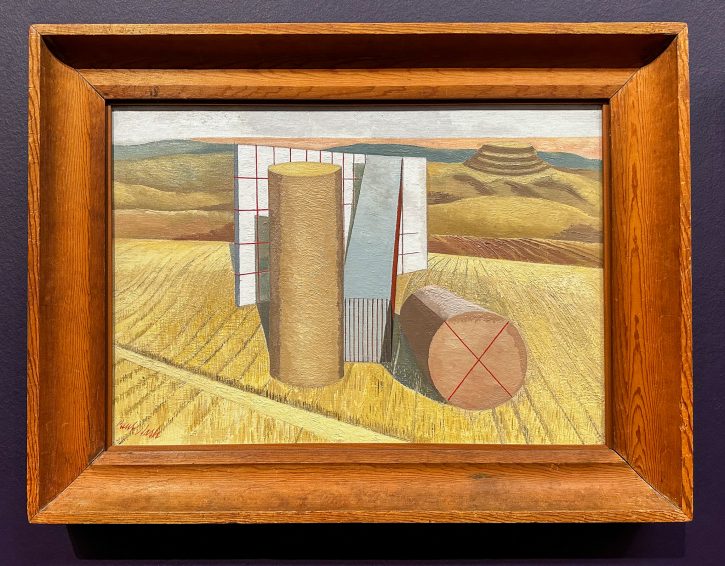Equivalents for the Megaliths
Paul Nash was a British artist who lived from 1889 to 1946. I’ve written about how much I love his photography here:
His painting, Equivalents for the Megaliths, from 1935, is in Tate Britain, and I was thrilled to get a close look at it recently. The solid oak frame is a perfect period-piece.
Here’s what the interpretation beside it says:
The painting shows Paul Nash’s engagement with prehistoric standing stones, known as ‘megaliths’, in the English countryside.
Paul Nash was a landscape painter, heavily influenced by Surrealism, and this painting is a mixture of a still-life and a landscape, with unusual objects combined in a disconcerting way, as if placed on a table of the natural world, .
Nash was inspired by the stones at the Avebury henge in the Wiltshire Downs.
I’ve not visited Avebury and I really must. It’s part of a Neolithic landscape which clearly had great meaning to our ancestors and has continued to inspire awe and wonder.
However, here Nash substitutes the Neolithic stones for modern geometric forms. He had a life-long fascination with the mystical qualities of inanimate objects. The powerful grouping of the different forms brings up the emotional feeling of the ancient monuments.
I love that he was inspired to paint adventurously and not stay with traditional landscapes, no matter how beautiful they were. As a young man I once went on a trip to see the Wittenham Clumps, a distinctive group of trees on top of a very small mound of a hill near Didcot just because of his images of them. As a teenager I had borrowed a copy of his posthumously-published unfinished autobiography, Outline, from the curator of my local art gallery and fell in love with his ideas on life. I really must read it again. I bought a copy after I handed it back to the curator and it’s been on my shelf since.
His work from this period seems inspired by Giorgio de Chirico, my other favourite, whose use of objects arranged as still-life in a haunting cityscape have definite parallels, although Paul Nash omits the disconcerting long shadows from objects outside of the image.
The painting evolved from the artist’s experiments with creating still arrangements from small found objects.
Art is the visible remains of someone exploring and finding meaning in colours and shapes and objects. It’s play for adults. I’m grateful Paul Nash was so playful and that I can still enjoy the evidence so many years later.
I can feel a trip to Wiltshire coming on.
